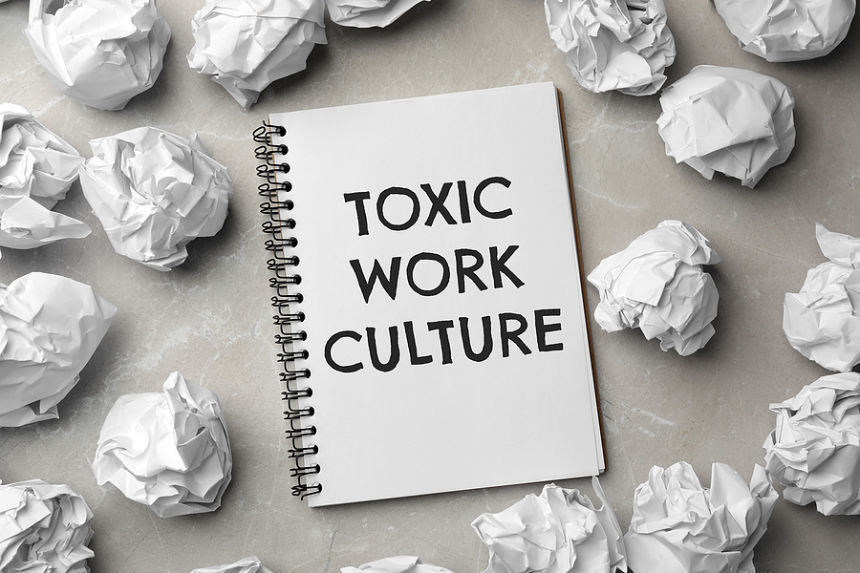Rude, insensitive bosses and colleagues, toxic work culture, and uncivil workplace behaviours drive away valuable employees and cost companies billions of dollars in lost human resources and workers’ compensation costs. Today’s workplaces face a confronting truth: Poor workplace cultures are driving away valuable talent.
Factors that drive a toxic work culture
Poor workplace culture can be driven by many factors including lack of communication, lack of respect, a hyper-emphasis on profits rather than employees, excessive micromanagement, and bullying behaviours.
Other contributing factors could include gossip, lack of empathy, lack of interest in employee engagement, and harassment and discrimination in various forms. The negative behaviours may be perpetrated by bosses, peers, subordinates, contractors, and even customers.
While it’s normal to have a stressful work day now and then, there are key signs that redflag a toxic work culture. A toxic environment makes employees feel undervalued, unappreciated, and uncomfortable. While many hostile workplaces have a high employee turnover, this is not always the case. Employees may become accustomed to uncivil and abrasive behaviours and poor management and continue to work under stress; or worse, they may become immune to the negative environment.
Red flags that indicate a hostile work environment
Let’s take a closer look at some warning signs of hostile workplace culture:
Poor leadership skills
A manager who constantly interrupts, engages in inappropriate communication, is judgemental of employees who are different, neglects to say please or thank you, takes employees for granted, and puts others down can be described as a toxic leader. This type of leader displays a lack of interest in employee wellbeing, enables the presence of psychosocial hazards, and is disinterested in staff and team development.
Sarcasm
While humour and wit can lighten situations and make employees smile, sarcasm often has the opposite effect. Sarcastic remarks not only demean the employee or team but also send the wrong signal to others. Sarcasm does not encourage positive behaviours and fails to achieve results as the employee does not learn from the experience. Sarcasm makes employees feel apprehensive about potential retorts and prevents them from giving their best.
Unprofessionalism
Shifting blame onto others, submitting late work, failing to communicate, gossiping about co-workers, badmouthing the organisation, failing to recognise boundaries between staff’s personal and work life, and going overboard at company parties or events are all examples of unprofessional behaviours.
Other signs of unprofessionalism at work could include any of the following:
- Sloppiness (in terms of appearance and workspace)
- Appearing disengaged
- Laziness
- Non-responsiveness
- Unreliability
- Spending too much on the phone or Internet
- Having a bad attitude towards others.
Abrasive behaviour
Abrasive behaviour often results in emotional distress and has the potential to disrupt organisational functioning. This is not to be confused with communicating unpopular or different decisions, or disagreeing on a point. Abrasive behaviour is perceived as disrespectful and is often the result of personality rather than work-based conflicts. Unfortunately, abrasive workplace behaviour is far more common than we realise. Glaring examples of abrasive behaviours include shouting, swearing, storming out, name-calling, making threats, throwing objects, thumping the table, and making personal remarks.
If left unchecked, abrasive behaviour results in reduced quantity and quality of work, lack of enthusiasm, increased absenteeism, and a poor reputation for the organisation as a potential employer. It can also lead to high employee turnover (flights) or stressful confrontations (fights).
Unsupportive manager
An unsupportive manager refuses to recognise effort, regularly cancels meetings, fails to give valuable feedback or performance reviews, and often undermines staff performance. Having an unsupportive boss can sap staff enthusiasm, make them feel undervalued, reduce performance, and stop them from progressing up the career ladder.
Bullying and harassment
A workplace has a toxic culture if employees experience overt or covert instances of harassment or bullying. It includes physical, verbal, written, emotional, or psychological abuse in any form. Workplace harassment may appear in any of the following forms:
- Disparaging or humiliating remarks on a person’s appearance, ethnicity, accent, attire, personality, or sexual preferences
- Racist comments or jokes
- Deliberately forcing employees to do or say something inappropriate in order to be accepted as part of the team<
- Deliberately forcing unrealistic work deadlines, providing pointless tasks, and using intimidatory tactics.
It may be challenging to get to the root of a problem and resolve it in an unbiased manner, but a positive work culture can prevent high-performing employees from leaving, increase morale and engagement, make employees feel appreciated, and attract and retain valuable talent.
As experienced professionals in the fields of human resources and psychology, our services at ESN can benefit your organisation in many ways. Our highly trained team members help managers and teams create positive work culture practices aimed at improving retention, engagement and performance. We provide proven strategies that help reinforce communication and management skills for employees, leaders and teams.
Article References
https://www.safeworkaustralia.gov.au/system/files/documents/1702/guide-preventing-responding-workplace-bullying.pdf
https://www.hcamag.com/au/news/general/how-to-identify-a-toxic-workplace/172596
https://www.abc.net.au/news/2020-08-19/working-from-home-and-workplace-toxicity/12545248





